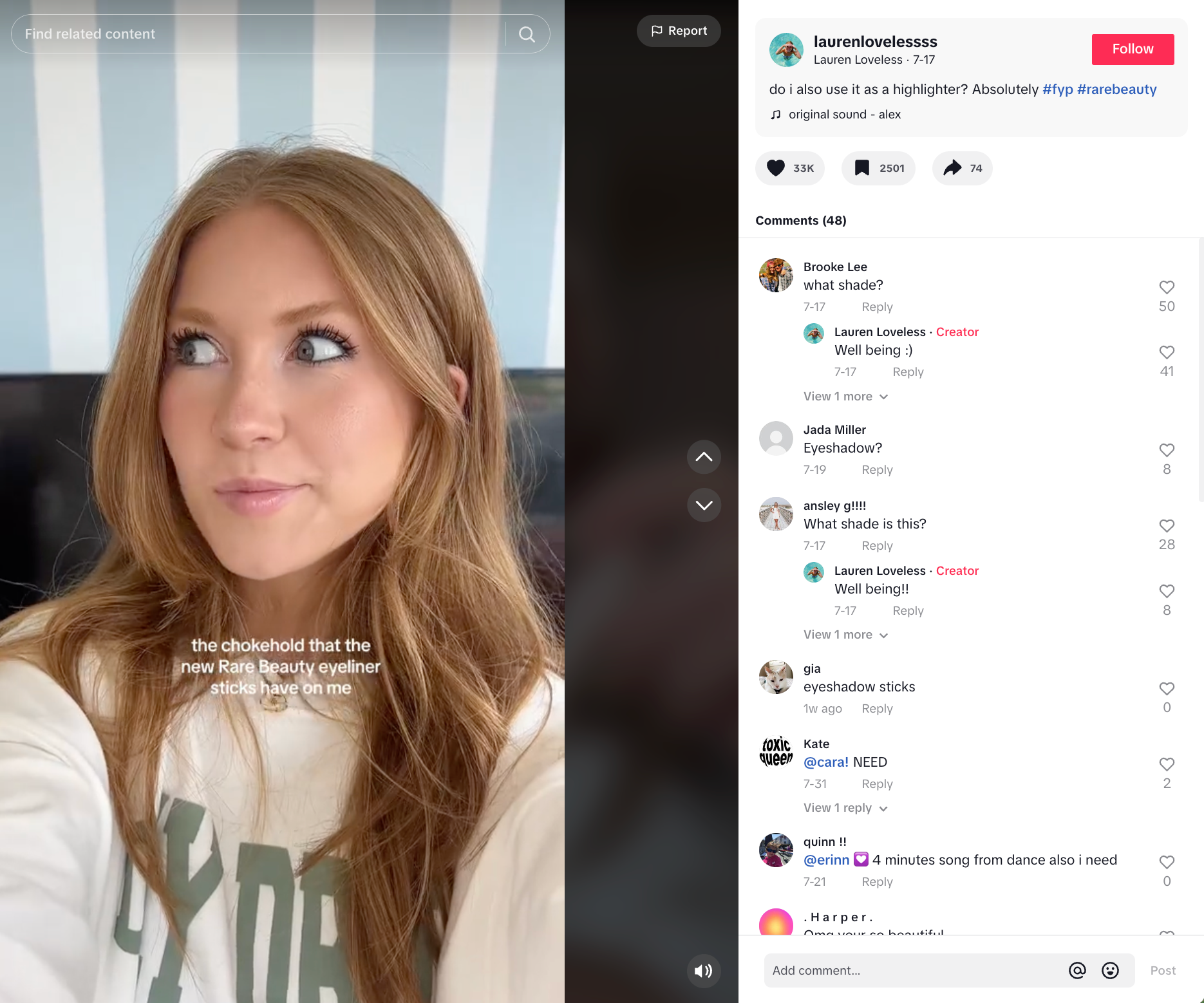If you’ve ever bought something an influencer recommended online, you were likely a recipient of affiliate marketing. In this form of marketing, online creators build partnerships with brands to promote their products and services. In return, they earn a commission for each sale made.
Affiliate marketing is a growing industry. According to one study, affiliate marketing spend is expected to reach $15.7 billion globally in 2024.
However, the problem for many beginner affiliate marketers is the upfront cost, including buying a domain name, hosting a website, building an audience, and learning expert tactics. So, the question is: Can you start an affiliate marketing business for free?
The short answer is: Yes. This guide will help you understand how to make money online with affiliate marketing and give you a step-by-step tutorial on how to get started. The only thing you’ll need to invest is your time.
How does affiliate marketing work?
Affiliate marketing is the process of earning commission by recommending a product or service offered by another business. As a business model, it can be highly profitable because the business pays you for every referred sale.
Not all affiliate marketing programs are the same, though. Some pay different commission rates, others will offer a fixed bonus, and some will offer free products or services in return. Examples of affiliate marketing programs include the Shopify Affiliate Program and Amazon Affiliates.
With time and hard work, successful affiliate marketing can turn your side hustle into a profitable business venture.
Why is affiliate marketing a good business model?
Affiliate marketing is a reciprocal business model that works for brands and creators. Both parties benefit from a successful affiliate partnership, with brands increasing their sales, and creators earning performance-based rewards.
It’s possible to make a living from affiliate marketing because it’s a profitable business model. Here’s why:
- It’s low risk. Businesses only need to pay out when you make a successful referral (versus paying a fee for influencers). For affiliates, your costs can stay low (if there are any at all), so the only thing lost is your time if you don’t hit the right mark.
- It’s a win-win for everyone. The business benefits from the sales you bring in, and then rewards you in return. However, customers also benefit from having a trusted recommendation to satisfy their needs/wants.
- You can work from anywhere in the world. If you’ve ever dreamed of living the digital nomad life, affiliate marketing can help you call anywhere your workplace. Though be sure to obey any work-related tax or labor laws.
- You can earn passive income. A fruitful passive income idea is to create a library of quality evergreen content. While this can take time, after a while, you’ll find that content you’ve already created still generates affiliate commissions months—even years—later.
Become a Shopify Affiliate
Join the program to grow your brand, access exclusive opportunities, and earn a competitive commission for each new business you refer to Shopify.
Apply now
How to start affiliate marketing
- Find a niche
- Choose an affiliate program
- Choose a traffic source
- Create content to build trust
- Grow an audience
- Respond and chat with your audience
The journey to becoming an affiliate marketer can seem daunting at first. But if you break it down into smaller steps, achieving your goals becomes a lot easier.
1. Find a niche
The best way to succeed in affiliate marketing is by establishing yourself within a niche. “Affiliate marketing, especially when you’re a beginner with no startup money, takes long-term thinking,” says Vivian Tejeda, writer and affiliate marketer. “First you need to focus on the fundamentals, like deciding on a niche and traffic source.”
A niche is the topic you’ll become an authority on. Some popular affiliate niches include:
- Hobbies: travel, photography, golfing, outdoors
- Money: Bitcoin, personal finance, credit cards, investing
- Health: fitness, nutrition, vegan food, weight loss, yoga, sexual wellness
- Lifestyle: luxury, airlines, fashion, jewelry
- Home: baby products, pets, plants, security
- Tech: web hosting, VPN, gaming, software
- Alternative: personal development, supplements, acupuncture and meditation, herbal remedies
The reason you need a niche is that if you recommend lots of different types of products, people won’t see you as the expert they can trust. Whereas if you only recommend a specific type of product and create content about it, then people can see you have expertise in that area.
It also helps you further down the line with search engine optimization (SEO) on social media and your affiliate website if you choose to build one later.
So how do you choose your niche?
You want to start with niches that have a high chance of profitability. For example, our research* found that business-related programs have some of the highest commissions, while clothing or books and media have some of the lowest:
However, these aren’t your only options, and some niches work better than others on particular platforms. Keep in mind: Affiliate marketing isn’t “get rich quick.” You’ll need to have at least some personal interest in your niche to keep you going.
Ask yourself the following questions to narrow down your options:
- Are you curious to learn more about your niche? Keeping up with trends and industry news in your area is super important in making sure you stay relevant for your audience.
- Do you already have experience or training in a specialized area? If you’re already knowledgeable on a subject, you can flatten your learning curve and get ahead more easily.
- Is it possible to create content without upfront investment? Some niches like technology or travel can involve a lot of upfront costs if you don’t already have the equipment or content to start with.
- Is it profitable? If your niche is either too broad, so you end up with too much competition, or too narrow, so you don’t have enough people interested in it, you’ll risk not making a profit.
Choosing a niche is a fine balance, and it can take some time and practice to hit the right spot—so don’t be put off if you don’t see success right away.
2. Choose an affiliate program
Once you’ve decided on a niche, the next step is choosing what affiliate program to join. It makes sense to choose an affiliate program or affiliate products that align with your niche.
For example, take vegan fitness and lifestyle educator Derek Simnett. He is an affiliate marketer for plant-based protein supplements. Choosing to work with a brand that aligns with his goals and content means Derek can make affiliate income promoting products he believes in.
There are two ways of finding suitable affiliate programs within your niche: direct and through marketplaces. If you’re already aware of brands in your niche that have affiliate marketing programs, you can approach them directly and sign up for them (affiliate programs are usually free to sign up for).
The other option is to join an affiliate program marketplace or affiliate network where you can browse thousands of programs and sign up to them through the marketplace.
Affiliate networks offer new marketers free and easy access to thousands of reputable affiliate programs you can join right away. Affiliate networks feature brands with affiliate programs in various niches. Some include:
While these are all reputable options, some things to consider when choosing an affiliate marketing program include not just its reputation, but also its commission rate and earnings per click (EPC) rate. An affiliate marketing program might have a low commission rate but a high EPC, which means it can still be a worthwhile program to join.
3. Choose a traffic source
At this point, you’ll need to start thinking about your traffic source for your affiliate marketing efforts. According to Vivian, there are many free platforms for creators to consider when starting out as affiliate marketers. “Instagram, TikTik, YouTube, blogging—you can create an account for free on these platforms and start creating content right away,” she says.
People often make the mistake of thinking you must become a blogger with a dedicated website (which costs money). Though it may be helpful when you plan to scale the business, it’s not essential.
You can start generating affiliate income using other (free) traffic sources, such as social media platforms, YouTube, and forum-based sites like Reddit and Quora. Let’s look at a few advantages and disadvantages of each channel:
- Pros: The largest social media platform around. You can reach a big audience for your affiliate products.
- Cons: Less attractive to younger audiences. Poor organic reach.
- Pros: Highly visual, excellent for showcasing affiliate products and services. Strong emphasis on video content like Reels and Stories.
- Cons: Lower organic reach for feed posts.
YouTube
- Pros: Great for search engine optimization (SEO). Global audience of over two billion people a month.
- Cons: Significant competition in most niches. Videos need to be professional and high quality to attract new and returning visitors and keep them engaged enough to click on an affiliate link.
TikTok
- Pros: Short video clips that don’t require a “professional” look and feel. More personalized content and authentic experiences. Trends start on TikTok.
- Cons: Links in descriptions are not clickable. Your affiliate link will need to live on a link in bio page.
- Pros: Excellent organic reach for affiliate marketers. Established platform for professionals.
- Cons: Predominantly for B2B audiences.
You might be thinking, “But I don’t have a social media following. How will I make money?” If you don’t have a following, now is your chance to start building one. That being said, you don’t need a huge following to make money with affiliate marketing—you just need to reach the right audience.
Lots of affiliate marketers make their income entirely through social media. A great example would be Papery Thoughts, a YouTube channel (among other social media accounts) that creates YouTube videos about journaling.

Papery Thoughts/YouTube
The channel generates affiliate sales through links to products in the video description that the creator uses onscreen. Here, the creator shares an affiliate link with her subscribers for 10% off at The Washi Tape Shop.
Other ways of using social media for affiliate marketing include joining Facebook groups in your niche and answering questions, or stitching replies to relevant TikTok videos in your industry. The key to building an audience is participation, not just spamming people with affiliate offers.
4. Create content to build trust
No matter which platform(s) you decide to use for your affiliate marketing efforts, the next step is to start creating content that builds trust with your target audience. In 2023, internet users worldwide spent, on average, 151 minutes per day on social media. What keeps us online for over two hours a day? Great content. This is an affiliate marketer’s best strategy.
As The Greenspring Home owner Kelly Marohl explains, creating the best content means not being self-serving. “Focus on publishing high-quality content that teaches your audience something,” says Kelly. “Always bring value to them. Do not focus your content around yourself.
“You’re going to be excited to start earning affiliate sales and landing brand deals, but before you can do that, build a highly engaged audience. That will pay off in dividends later!”

The Greenspring Home
Since building a content library takes time, it’s a good idea to plan ahead and create a content calendar or strategy that matches your affiliate marketing goals. Your calendar can include outlines of what type of content you’ll publish on any given day, such as:
- Tutorials
- Q&As
- Product reviews
- How-Tos
- Tips and tricks
When coming up with your content strategy, also keep in mind a keyword strategy, especially for YouTube SEO (if you choose YouTube as your platform). After all, even high-quality content can get lost in the noise if you don’t optimize it for search results.
You can figure out which keywords to use with a little research. Using YouTube as an example, try searching for your competitors’ channels. See what videos are their most popular ones and pay attention to the video title, description, and hashtags they’ve used.
When engaging in affiliate marketing, don’t forget to include links to your affiliate products or services, and add a disclaimer that explains they are affiliated.
📚 Read more: Affiliate Marketing Tips & Strategies to Earn More Money
5. Grow an audience
While you’re creating content on your platform of choice, it’s also a good idea to start building an email list or SMS list. There are two main reasons for doing this:
You own your contact list
So, you don’t need to rely on social media platforms to interact with your audience. All of the major platforms have hiccups now and then, so when they go down you can always contact your audience via email.
You’re able to leverage affiliate links
While some affiliate programs don’t allow you to include affiliate links in your emails (Amazon’s affiliate program being the main one), you can still email links to content you create that contain an affiliate link—you send traffic to any of your content.
Using your email list is a great opportunity to add even more value to your audience—further building authority in your niche subject. Some ideas to help you get started with content for your email list include:
- Industry reports or news
- Links to new blog posts
- Interview roundups or summaries
- Behind the scenes of your life or business
- Promotional deals (occasionally)
- Free digital downloads
When it comes to building an email list for free, there are plenty of email marketing software providers that offer free plans, including Shopify Email, Mailchimp, and MailerLite. It’s worth shopping around to see which one suits you best.
Once you build trust with an audience, you can start promoting high-ticket affiliate programs. These affiliate programs offer opportunities to make up to five figures per sale. However, you often need to have an established niche and influence to encourage people to buy more expensive products.
6. Respond and chat with your audience
The last tip for growing your affiliate marketing business is engaging with your audience. Generating conversation not only helps your followers or subscribers feel heard but also works in your favor for social media algorithms.
When people interact with your content, it’s generally a signal for algorithms to say that your content is worth boosting and showing to more people who might be interested.
On TikTok for example, when you like and respond to comments on your videos, those comments will have a special badge that says “Liked by creator” that stands out against other comments.

In this example from influencer and affiliate marketer Lauren Loveless, she’s responding to comments from fans to help them make a purchase on her recommended product from Rare Beauty. Lauren has multiple affiliate links accessed from the link-in-bio page attached to her TikTok account. When she posts content driving to these links, she is engaged in the comments.
These interactions are important, as they tell your audience that you do read and appreciate their thoughts. As a result, they’re more likely to interact with your future content (and maybe even encourage others to do so, too).
Responding to your audience also lets you find out what they might want from you in terms of future content—a win-win situation.
Start your affiliate marketing business today
Affiliate marketing doesn’t have to come with upfront investment. Taking the steps outlined in this guide can be a relatively risk-free way of starting your affiliate marketing journey. The only cost? Your time and effort.
So, start thinking about what niche you could start building, working up to a passive income revenue stream, until you can work from anywhere you want (or just tinker with outside your main income).
How to start affiliate marketing FAQ
What are the top 5 affiliate marketing networks in 2024?
The top five affiliate marketing networks are:
- Affiliate Future
- AvantLink
- CJ (Commission Junction)
- ClickBank
- FlexOffers
How can I make $100 a day affiliate marketing?
Affiliates can earn $100 a day by promoting multiple affiliate programs in their content. It doesn’t happen overnight. But if you consistently post valuable content that entertains and supports your audience, you can earn regular sales in your affiliate marketing business.
How can I start affiliate marketing as a beginner?
To start affiliate marketing as a beginner, begin by choosing a niche and platform for your business. There are many affiliate marketing programs available directly through brands or affiliate networks such as ShareASale or Skimlinks. Research and pick the best affiliate program to fit your needs, and start creating your content and building your audience.
Can you start affiliate marketing with no money?
Yes, you can start affiliate marketing with no money—and it’s surprisingly easy. Instead of creating a website for your niche, which can cost money to develop, you can build traffic with your target audience through free social media platforms or YouTube, for example.





